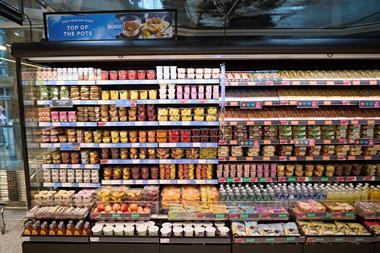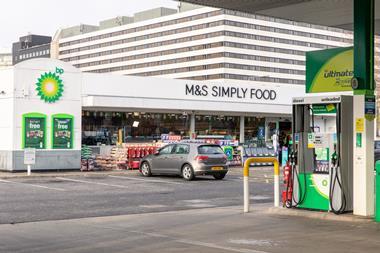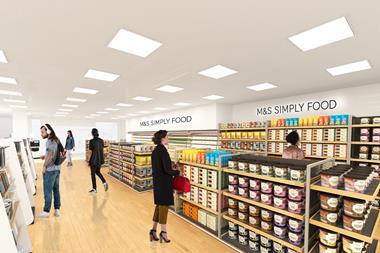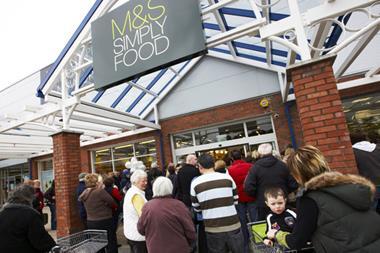Retailing in the UK was worth £249.1bn in 2005, an increase of 1% since 2004. Although this was a much lower rate of growth than in recent years, sales through grocery retailers were 3.4% higher year on year at £123.9bn.
Background inflation ran at 2.3% throughout 2005 and food price inflation was 1.2%, although the leading multiples reported deflation of 1-2% in their businesses. This is at a time when retailers are facing increased cost pressures due to higher utility bills and fuel costs.
Consumer demand weakened last year due to higher levels of debt, increased domestic bills and rising unemployment, and non-food sales were an obvious casualty. Consumers have, however, demonstrated the inclination to trade up in food - perhaps to compensate for forgoing luxuries in other areas.
C-store strength
There are 51,526 dedicated convenience stores in the UK, which represents a year-on-year decrease of 1.1% since the beginning of 2005. The number of non-affiliated independent stores fell by more than 3.6%, although a significant proportion transferred to symbol groups, where store numbers increased by 5.1%. Over the past year many symbol group operators ran intensive recruitment campaigns, with the wholesale groups such as Bestway, Landmark and Booker at the forefront.
There was also a small increase in the number of convenience stores operated by the supermarkets. Tesco Express, Sainsbury's Local and M&S Simply Food continued to expand throughout 2005, while other retailers transferred out of the segment including Budgens, which moved to a franchise operation.
Aside from the commercial pressures that lead to site rationalisation, the forecourt sector is experiencing change as the major oil companies divest their company-owned stores. This has created opportunities for large-scale dealer-owned, dealer-operated companies including Pace, Malthurst and Snax 24.
Co-operative store numbers have been relatively static. Following a period of intense acquisition activity during 2003 and 2004, the focus last year was on delivering the benefits of these acquisitions. The Co-operative Group made only piecemeal acquisitions and announced it wants to sell 100 poorly performing stores.
Specialist comeback
The number of stores in the traditional retail sector increased last year, reversing a long-term trend. The most significant increase has been in farm shops, whose numbers more than doubled.
There has also been a small increase in bakers, butchers/delicatessens and greengrocers within multiple food specialists, despite the collapse of the Dewhurst chain, although this is offset by a fall in other specialists.
The specialist off licence segment has also been subject to significant change, where the break-up of Unwins created expansion opportunities for other operators, including The Thresher Group.
There was a slight decline in the number of stores between 3,000sq ft and 40,000sq ft during 2005. Co-operative societies continued to divest larger stores to focus on convenience operations, while the leading multiples have been extending mid-sized stores, driving growth of the hypermarket. Grocery retailers have also being transferring into other sectors, notably non-food.
There has been a significant reallocation of stores following Morrisons' takeover of Safeway. In total, 230 stores have been disposed of. The sale of Kwik Save by Somerfield also created an opportunity for the hard discounters.
Foodservice continues to be an important channel and accounted for 31% of all food and drink sales in 2005 (IGD/Horizons). C-stores in particular increased their efforts in this area.
Background inflation ran at 2.3% throughout 2005 and food price inflation was 1.2%, although the leading multiples reported deflation of 1-2% in their businesses. This is at a time when retailers are facing increased cost pressures due to higher utility bills and fuel costs.
Consumer demand weakened last year due to higher levels of debt, increased domestic bills and rising unemployment, and non-food sales were an obvious casualty. Consumers have, however, demonstrated the inclination to trade up in food - perhaps to compensate for forgoing luxuries in other areas.
C-store strength
There are 51,526 dedicated convenience stores in the UK, which represents a year-on-year decrease of 1.1% since the beginning of 2005. The number of non-affiliated independent stores fell by more than 3.6%, although a significant proportion transferred to symbol groups, where store numbers increased by 5.1%. Over the past year many symbol group operators ran intensive recruitment campaigns, with the wholesale groups such as Bestway, Landmark and Booker at the forefront.
There was also a small increase in the number of convenience stores operated by the supermarkets. Tesco Express, Sainsbury's Local and M&S Simply Food continued to expand throughout 2005, while other retailers transferred out of the segment including Budgens, which moved to a franchise operation.
Aside from the commercial pressures that lead to site rationalisation, the forecourt sector is experiencing change as the major oil companies divest their company-owned stores. This has created opportunities for large-scale dealer-owned, dealer-operated companies including Pace, Malthurst and Snax 24.
Co-operative store numbers have been relatively static. Following a period of intense acquisition activity during 2003 and 2004, the focus last year was on delivering the benefits of these acquisitions. The Co-operative Group made only piecemeal acquisitions and announced it wants to sell 100 poorly performing stores.
Specialist comeback
The number of stores in the traditional retail sector increased last year, reversing a long-term trend. The most significant increase has been in farm shops, whose numbers more than doubled.
There has also been a small increase in bakers, butchers/delicatessens and greengrocers within multiple food specialists, despite the collapse of the Dewhurst chain, although this is offset by a fall in other specialists.
The specialist off licence segment has also been subject to significant change, where the break-up of Unwins created expansion opportunities for other operators, including The Thresher Group.
There was a slight decline in the number of stores between 3,000sq ft and 40,000sq ft during 2005. Co-operative societies continued to divest larger stores to focus on convenience operations, while the leading multiples have been extending mid-sized stores, driving growth of the hypermarket. Grocery retailers have also being transferring into other sectors, notably non-food.
There has been a significant reallocation of stores following Morrisons' takeover of Safeway. In total, 230 stores have been disposed of. The sale of Kwik Save by Somerfield also created an opportunity for the hard discounters.
Foodservice continues to be an important channel and accounted for 31% of all food and drink sales in 2005 (IGD/Horizons). C-stores in particular increased their efforts in this area.






















No comments yet